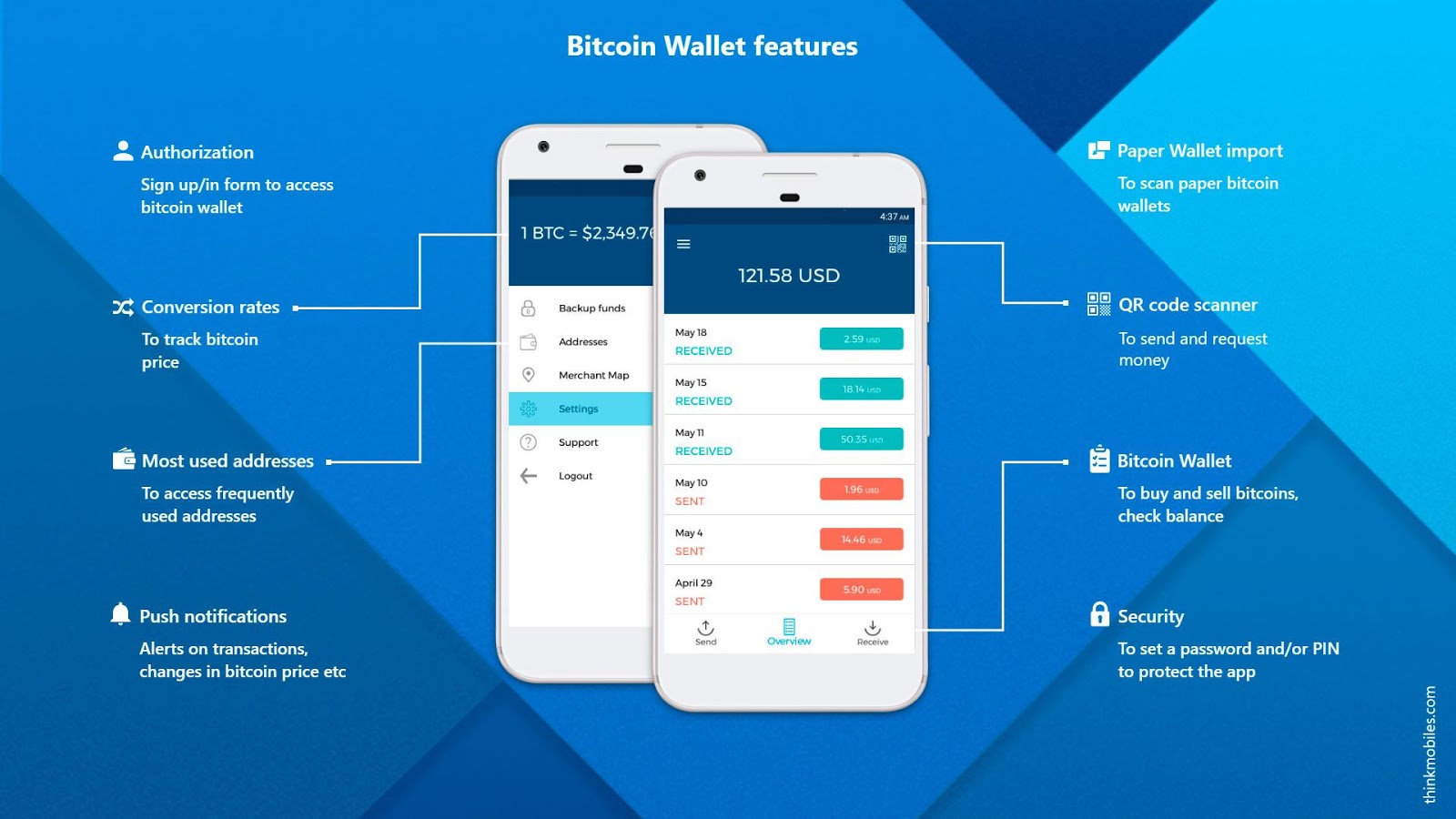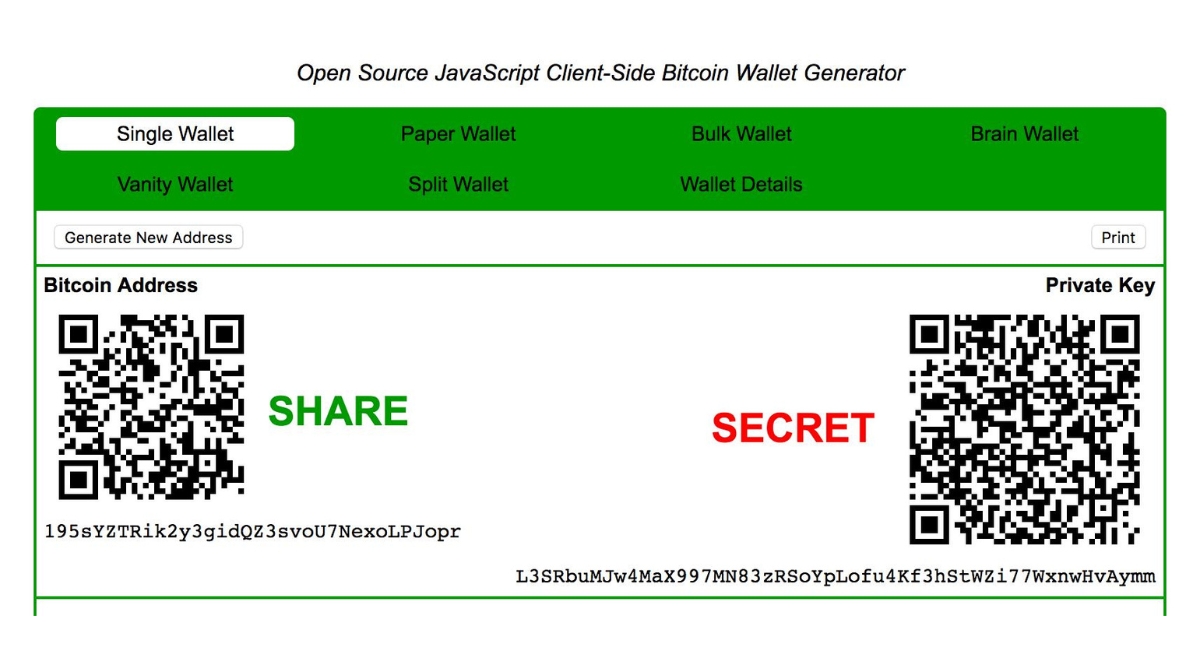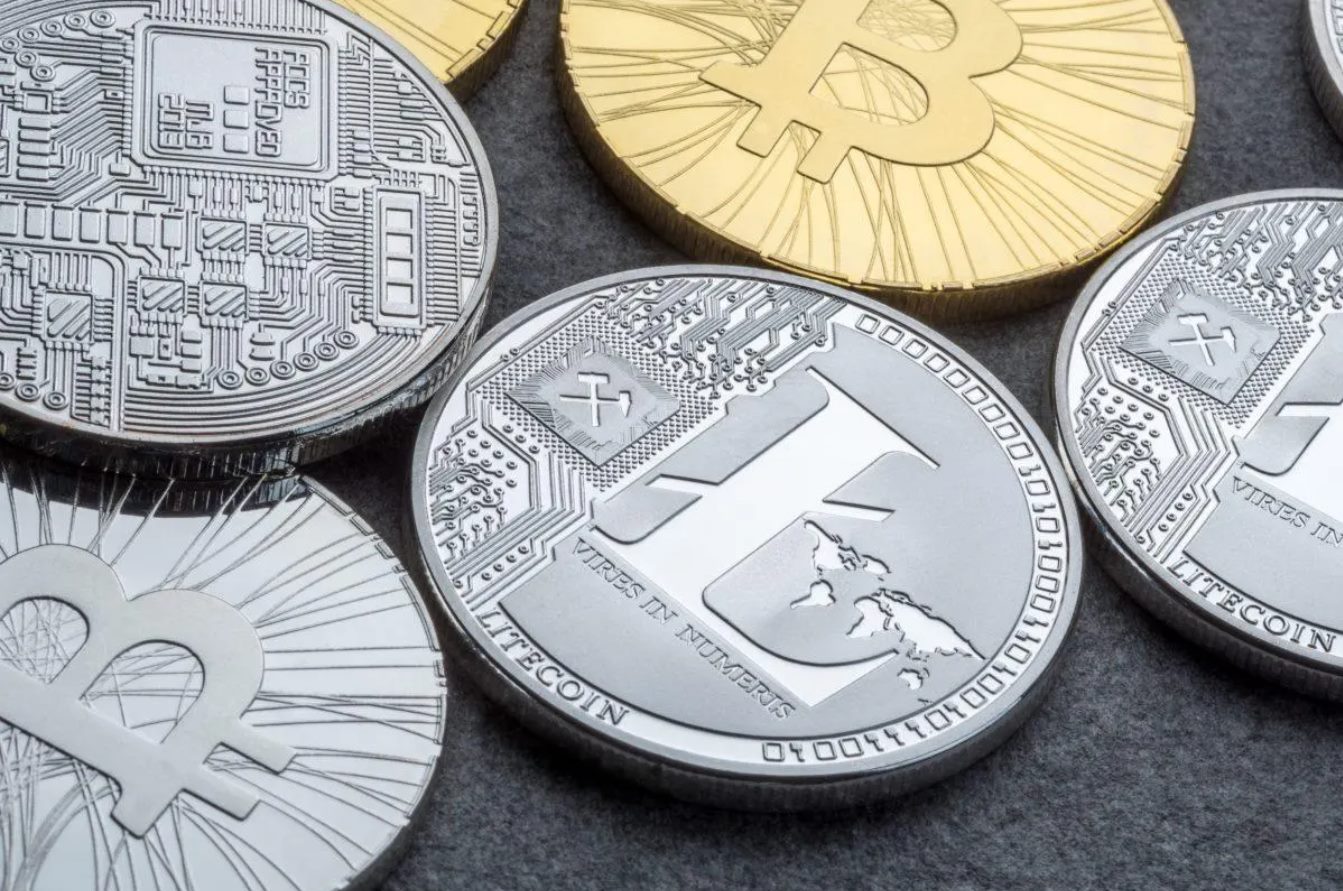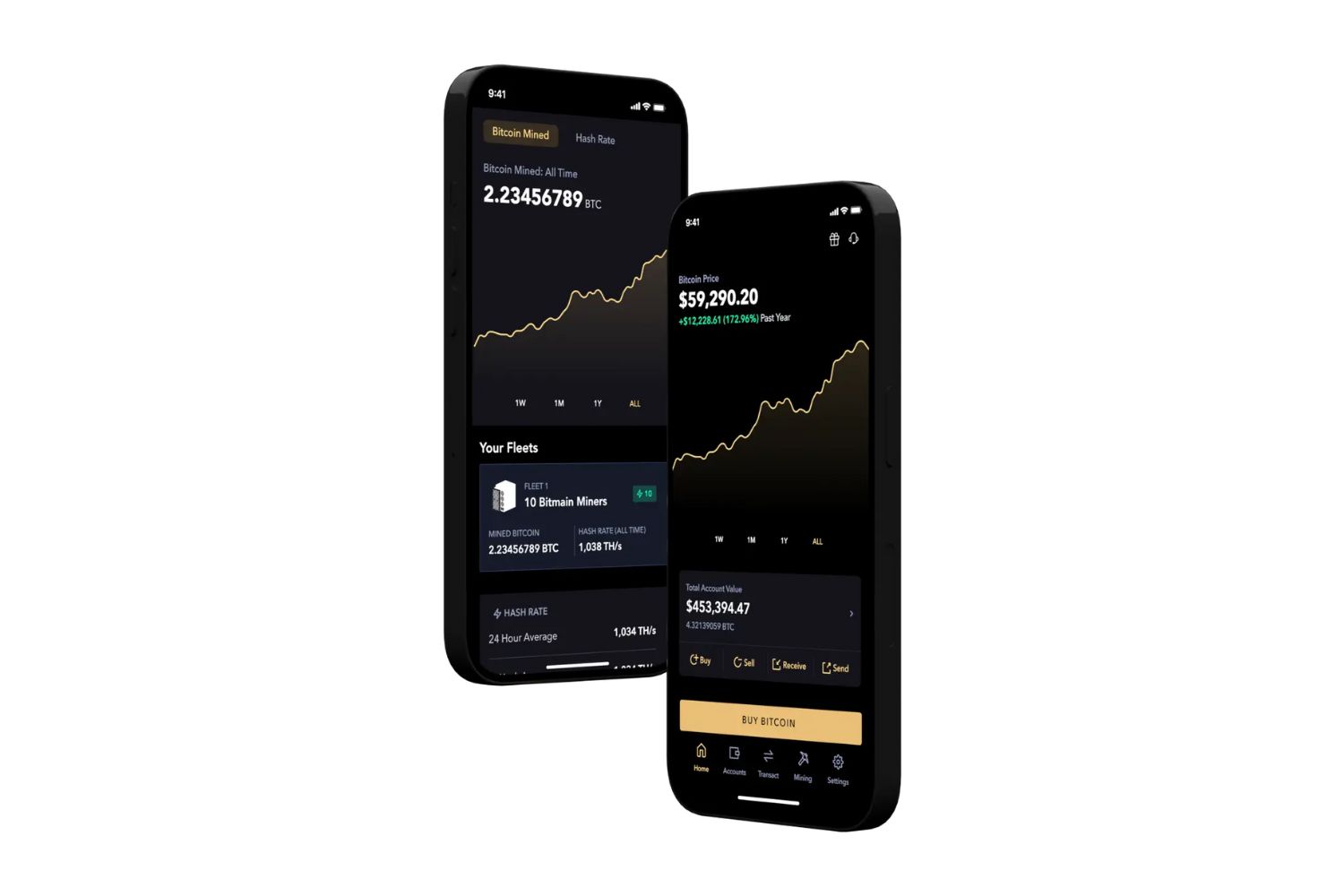What is a Bitcoin Wallet?
A Bitcoin wallet is a digital tool that allows users to securely store, send, and receive Bitcoin. Think of it as a virtual bank account specifically designed for cryptocurrencies. Just like a traditional wallet holds your physical cash and cards, a Bitcoin wallet holds your digital assets.
But here’s what makes it unique: Bitcoin wallets don’t actually store the cryptocurrency itself. Instead, they store the private keys that are needed to access and manage your Bitcoin. These private keys are what enable you to sign transactions and prove ownership of your Bitcoin.
Bitcoin wallets come in various forms, from software-based wallets that run on your computer or mobile device to hardware wallets that are physical devices specifically built for securely storing Bitcoin. There are even paper wallets, which involve printing out the private keys on paper for offline storage.
Each Bitcoin wallet has its own set of features and security measures, so it’s crucial to choose one that suits your needs and preferences. Some wallets prioritize convenience and accessibility, while others focus on enhanced security and privacy.
It’s important to note that Bitcoin wallets are not the same as Bitcoin exchanges. While exchanges allow you to buy and sell Bitcoin, they typically hold custody of your Bitcoin until you withdraw it to your personal wallet. Keeping your Bitcoin in a personal wallet gives you more control and security over your funds.
In the next sections, we’ll explore the different types of Bitcoin wallets available and how you can create one for yourself.
Types of Bitcoin Wallets
When it comes to Bitcoin wallets, there are several different types to choose from. Each type has its own pros and cons, offering different levels of security, convenience, and accessibility. Here are the most common types of Bitcoin wallets:
- Software Wallets: These are applications or software programs that you can install on your computer or mobile device. They offer convenience and accessibility, allowing you to access your Bitcoin easily. Examples of software wallets include Electrum, Exodus, and Jaxx.
- Hardware Wallets: These are physical devices specifically designed to store your Bitcoin offline. They offer the highest level of security as they keep your private keys offline, away from potential online threats. Popular hardware wallets include Ledger Nano S, Trezor, and KeepKey.
- Paper Wallets: This is a printed piece of paper that contains your Bitcoin private keys. Paper wallets are considered a form of cold storage as they are stored offline. They are a good option if you want to keep your Bitcoin completely offline and out of the reach of hackers. It’s important to store paper wallets in a safe and secure location.
- Online Wallets: Also known as web wallets, these wallets are hosted online by a third-party service provider. They offer convenience and are accessible from any device with an internet connection. However, online wallets are considered less secure compared to other types of wallets as your private keys are stored on the provider’s servers.
- Mobile Wallets: These wallets are designed specifically for mobile devices such as smartphones and tablets. They provide the convenience of accessing your Bitcoin on the go and are usually easy to use. Some popular mobile wallets include Mycelium, Bread, and Trust Wallet.
It’s important to assess your needs, level of technical expertise, and security requirements when choosing a Bitcoin wallet. Consider factors such as ease of use, security features, backup options, and compatibility with your operating system or device.
Now that we’ve explored the different types of Bitcoin wallets, let’s dive into the process of creating a Bitcoin wallet.
Creating a Software Wallet
Creating a software wallet is a relatively simple and straightforward process. Here’s a step-by-step guide to help you get started:
- Research and choose a software wallet: There are numerous software wallets available, so take the time to research and choose one that aligns with your needs. Consider factors such as security features, user-friendliness, and compatibility with your device’s operating system.
- Download and install the software: Once you’ve chosen a software wallet, visit the official website of the wallet provider and locate the download section. Download the appropriate version of the software for your device and operating system. Follow the installation instructions to install the wallet on your device.
- Create a new wallet: Launch the software wallet application and look for the option to create a new wallet. Click on this option to initiate the setup process.
- Set a strong password: During the wallet creation process, you will be prompted to set a password. Choose a strong and unique password that is difficult for others to guess. Make sure to store this password in a safe and secure location as it will be needed to access your wallet.
- Generate your wallet’s seed phrase: After setting the password, the wallet will generate a seed phrase, which is a series of random words. This seed phrase serves as a backup and is crucial for restoring your wallet in case of loss or device failure. Write down the seed phrase and store it securely.
- Backup your wallet: Most software wallets have a backup feature that allows you to export and save a backup file. Follow the instructions provided by the wallet to create a backup of your wallet. Store the backup file in a safe location, preferably offline or on a secure external storage device.
- Receive and send Bitcoin: With your software wallet set up, you now have a Bitcoin address that you can use to receive Bitcoin. Share this address with others who wish to send Bitcoin to you. Similarly, you can use the wallet’s interface to send Bitcoin to others by entering their Bitcoin address.
Remember, it’s essential to keep your software wallet updated with the latest version provided by the wallet provider. Regularly check for wallet updates and install them to benefit from security patches and feature enhancements.
Congratulations! You’ve successfully created a software wallet and are now ready to securely store and manage your Bitcoin.
Creating a Hardware Wallet
Creating a hardware wallet is a highly secure method for storing your Bitcoin. These physical devices are specifically designed to keep your private keys offline and away from potential online threats. Here’s a step-by-step guide to help you create a hardware wallet:
- Research and choose a hardware wallet: There are several reputable hardware wallet brands available, such as Ledger, Trezor, and KeepKey. Take the time to research and read reviews to choose a hardware wallet that meets your security needs.
- Purchase a hardware wallet: Once you’ve chosen a hardware wallet, visit the official website or authorized resellers to purchase the device. Be cautious of any third-party sellers and only purchase from trusted sources to avoid counterfeit products.
- Setup the hardware wallet: Once you receive your hardware wallet, follow the manufacturer’s instructions to set it up. This usually involves connecting the device to your computer or mobile device and installing any necessary software or firmware updates.
- Create a new wallet: After setting up the hardware wallet, you’ll be prompted to create a new wallet. Follow the instructions on the device’s screen, which may include setting a PIN code or passphrase for added security.
- Backup your wallet: During the setup process, the hardware wallet will generate a seed phrase, which is a series of words that serve as a backup for your wallet. Write down this seed phrase and store it securely. It’s crucial not to store it digitally or take a screenshot, as this can compromise the security of your wallet.
- Receive and send Bitcoin: With your hardware wallet set up, you can now find your Bitcoin address on the device’s interface. Share this address with others who wish to send Bitcoin to you. To send Bitcoin, use the wallet’s interface to enter the recipient’s Bitcoin address and confirm the transaction on the device itself.
It’s important to keep your hardware wallet safe and secure. Ensure it is kept in a physical safe or secure location when not in use. Regularly check for any firmware updates released by the manufacturer and install them to benefit from the latest security features and improvements.
By following these steps, you can create a hardware wallet and enjoy the highest level of security for your Bitcoin holdings.
Creating a Paper Wallet
A paper wallet is a form of offline storage for your Bitcoin that involves generating and printing out your private keys on a physical piece of paper. This method provides an extra layer of security as your private keys are not stored digitally. Here’s a step-by-step guide to help you create a paper wallet:
- Choose a trusted paper wallet generator: There are various paper wallet generators available online. It’s crucial to choose a trusted and secure generator to ensure the safety of your Bitcoin. Popular options include Bitaddress.org and WalletGenerator.net.
- Disconnect from the internet: To ensure the highest level of security, it’s recommended to disconnect your device from the internet before generating the paper wallet. This minimizes the risk of your private keys being compromised during the process.
- Access the paper wallet generator: Visit the website of your chosen paper wallet generator. Verify that you are on the correct website by double-checking the URL and ensuring it is the official site.
- Generate your paper wallet: Follow the instructions provided by the paper wallet generator to generate your paper wallet. This usually involves moving your mouse cursor randomly or entering random keystrokes to generate entropy for the private key generation process.
- Print and securely store: Once the paper wallet is generated, print out the wallet on a printer that is connected to your offline device. Ensure that the printer is not connected to any network, as this can compromise the security of your private keys.
- Backup and protect: It’s crucial to make multiple copies of your paper wallet and store them in secure locations. Consider using fireproof and waterproof safes or depositing copies in a safety deposit box.
- Fund and use your paper wallet: To fund your paper wallet, send Bitcoin to the public address listed on the printed wallet. You can use any Bitcoin wallet or exchange to send funds to your paper wallet. To use your funds, you will need to import or sweep the private key into a Bitcoin wallet.
It’s important to note that paper wallets are more suitable for long-term storage rather than frequent transactions. Once you import or sweep the private key into a Bitcoin wallet for use, consider generating a new paper wallet for future storage.
By following these steps, you can create a paper wallet and securely store your Bitcoin offline.
Setting Up Security Measures
Securing your Bitcoin wallet is crucial to protect your valuable digital assets from potential threats. Here are some essential security measures to consider:
- Use strong, unique passwords: When creating a software wallet or accessing your Bitcoin on any platform, always use strong passwords. A strong password is a combination of uppercase and lowercase letters, numbers, and special characters. Avoid using easily guessable information like your name, birthdate, or sequential numbers.
- Enable two-factor authentication (2FA): Many Bitcoin wallet providers and exchanges offer two-factor authentication as an added layer of security. 2FA requires you to provide an additional verification code, typically generated by an authenticator app on your smartphone, in addition to your password when logging in. Enable this feature to protect your wallet from unauthorized access.
- Keep your software up to date: Regularly update your software wallet or any Bitcoin-related applications to the latest versions. Developers often release updates to address security vulnerabilities and enhance the overall security and functionality of the wallet. Stay informed about updates and take the time to install them promptly.
- Be cautious of phishing attempts: Phishing is a common cybercrime tactic used to trick individuals into revealing their private keys or passwords. Be vigilant and never click on suspicious links or provide your wallet information on unauthorized websites or emails. Double-check the URL of the website you are visiting to ensure it is legitimate.
- Backup your wallet securely: Make regular backups of your wallet’s private keys or seed phrase. Store these backups securely in multiple physical locations, such as external hard drives, USB drives, or even on paper. It’s essential to keep these backups offline and away from potential cyber threats or physical damage.
- Consider using a dedicated computer or device: If you frequently engage in Bitcoin-related activities, consider using a dedicated computer or device solely for these purposes. This can minimize the risk of malware or keylogging software compromising your Bitcoin wallet.
- Encrypt your wallet: Some software wallets allow you to encrypt your wallet file with a password. This adds an extra layer of protection, ensuring that even if someone gains access to your wallet file, they will still need the password to decrypt it and access your funds.
- Regularly check your transactions and wallet activity: Keep a close eye on your wallet’s transaction history and monitor any suspicious activity. If you notice any unauthorized transactions or unusual behavior, take immediate action to secure your wallet and report the incident to the appropriate authorities.
Implementing these security measures can significantly enhance the safety and protection of your Bitcoin wallet. Remember that securing your wallet is an ongoing process, and it’s essential to stay informed about the latest security practices and threats in the cryptocurrency space.
Picking the Right Wallet for You
Choosing the right Bitcoin wallet is a crucial decision that determines the security, accessibility, and convenience of managing your digital assets. Here are some factors to consider when picking the right wallet for you:
- Security: The security of your Bitcoin should be a top priority. Look for wallets that offer robust security features, such as encryption, two-factor authentication (2FA), and secure offline storage. Hardware wallets, such as Ledger and Trezor, are known for providing the highest level of security.
- User Experience: Consider the user experience of the wallet. Is it user-friendly and intuitive? Does it offer a clean and easy-to-navigate interface? A wallet that is easy to use and understand will make it more convenient for you to manage your Bitcoin holdings.
- Supported Platforms: Check if the wallet is compatible with your operating system and device. Some wallets are designed specifically for mobile devices, while others are more suitable for desktop or web use. Ensure it supports the platform you intend to use it on.
- Backup and Recovery: Look for wallets that provide backup and recovery options. A reliable wallet will have mechanisms in place to help you recover your funds in case of loss or device failure. This can include seed phrases, wallet file backups, or recovery keys.
- Multi-Currency Support: If you hold or plan to hold multiple cryptocurrencies, consider a wallet that supports a wide range of digital assets. This will allow you to manage all your cryptocurrencies in one place, eliminating the need for multiple wallets.
- Transaction Features: Consider the transaction features offered by the wallet. Look for wallets that allow you to set transaction fees, customize transaction confirmations, and manage your transaction history effectively.
- Community Reputation and Support: Research the reputation and track record of the wallet provider. Check online forums, reviews, and social media to see what other users are saying about the wallet. Ensure that the provider offers responsive customer support in case you encounter any issues or have questions.
- Privacy and Anonymity: If privacy and anonymity are important to you, consider wallets that prioritize these features. Look for wallets that support anonymous transactions and offer features like coin mixing or advanced privacy settings.
- Continued Development and Updates: Consider the wallet’s development and update frequency. Is the wallet actively maintained and regularly updated with new features and security patches? A wallet that is actively developed indicates a commitment to improving and supporting the platform.
Take the time to evaluate your needs and preferences when choosing a Bitcoin wallet. Remember that selecting the right wallet is a personal decision, and what works best for someone else may not necessarily be the best fit for you. It’s always recommended to conduct thorough research and carefully weigh the features and security measures offered by different wallets before making your decision.
Conclusion
Creating a Bitcoin wallet is the first step towards securely managing your digital assets. Whether you choose a software wallet, hardware wallet, or paper wallet, it’s essential to prioritize the security of your Bitcoin holdings. Consider factors such as the wallet’s security features, user experience, supported platforms, and backup options when making your decision.
Software wallets provide convenience and accessibility, while hardware wallets offer the highest level of security by keeping your private keys offline. Paper wallets, on the other hand, enable offline storage and are a popular choice for long-term holdings. Each type of wallet has its own advantages and disadvantages, so it’s crucial to determine which one aligns best with your needs and preferences.
Setting up security measures is paramount to protect your Bitcoin wallet. Use strong passwords, enable two-factor authentication, keep your software up to date, and be cautious of phishing attempts. Regularly backup your wallet and store backups in secure physical locations. Implementing these security practices will safeguard your valuable assets from potential threats.
Lastly, when choosing a wallet, consider factors such as the wallet’s security features, user experience, multi-currency support, and community reputation. Assessing these aspects will help you pick the right wallet that suits your specific requirements.
Remember that the cryptocurrency space is continually evolving, and it’s crucial to stay informed about the latest security practices and developments in the industry. Regularly review your chosen wallet’s updates and security measures to ensure you’re keeping up with the best practices in securing your Bitcoin.
By taking the time to research, make informed decisions, and implement proper security measures, you can confidently create a Bitcoin wallet that provides a safe and secure environment for managing your digital assets.

























